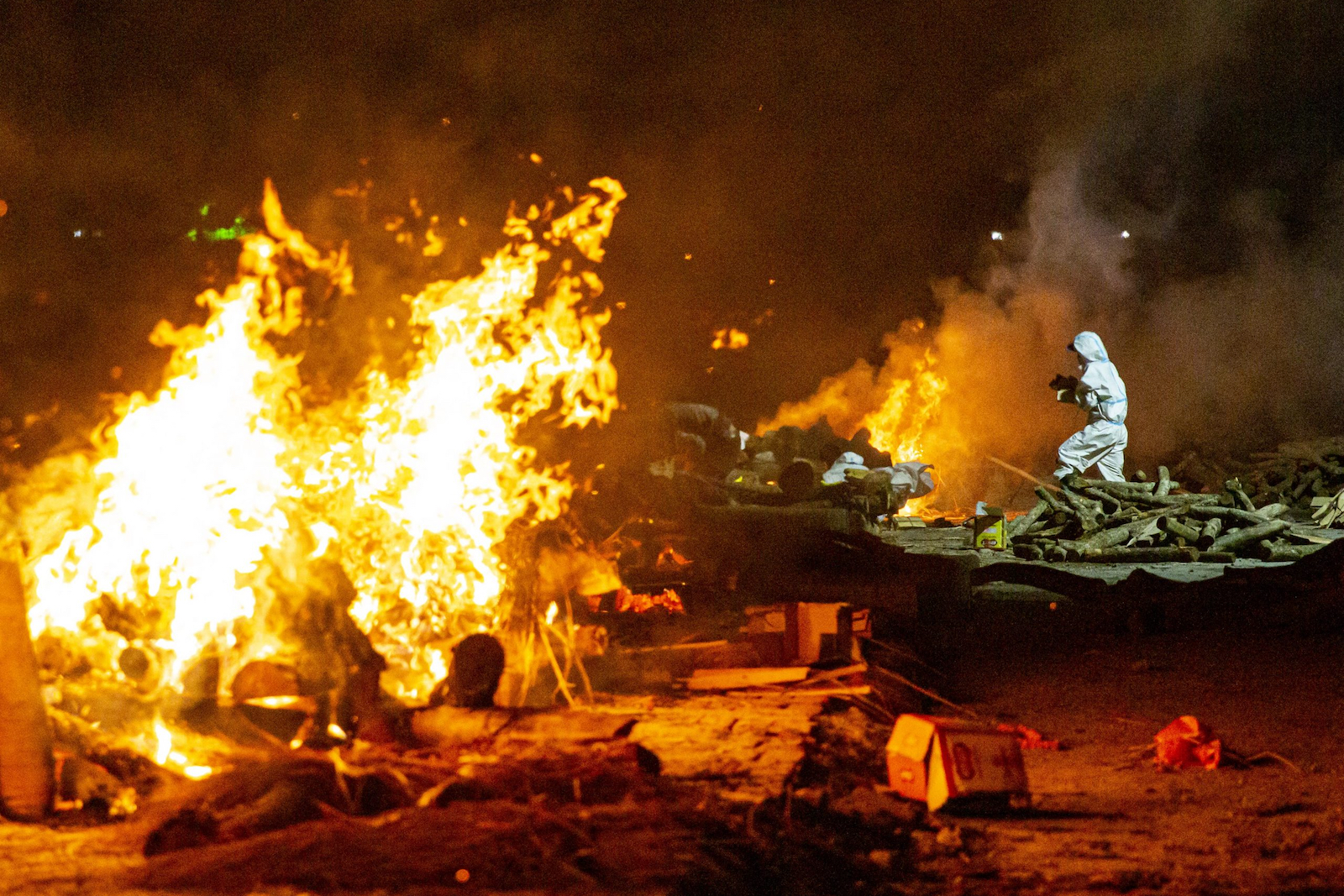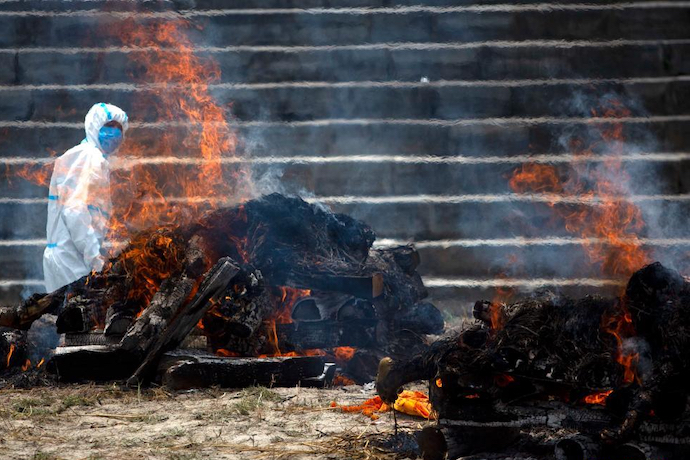
Nepal’s Ruling Class: Experts in Failure
“Failing to prepare is preparing to fail.” – Benjamin Franklin
As you read this, the country of Nepal is being decimated by the COVID-19 virus. Every few minutes, due to a lack of available oxygen, a life is lost. Both in Kathmandu, the capital city, and the rural areas of Nepal, help from the government, like oxygen and available hospital beds, is in short supply. With a population of more than 30 million people, Nepal has only 1,127 ICU beds and 453 ventilators. In Nepalgunj, a city bordering Uttar Pradesh, one of the worst affected areas in neighboring India, help from government officials has been non-existent. Bheri Hospital, for example, has received no support from the central government.
Dhawal Shumsher Rana, the mayor of the embattled city, was left with little option but to use the city’s budget to set up an isolation center, staffed with doctors and nurses, along with free food and ambulance services. However, faced with a deadly pandemic, the people of Nepal are fighting for their lives; sadly, many of them are losing the fight, and ultimately their lives. In many ways, the fragile health system is a reflection of the country as a whole.
Researchers at the University of Washington’s Institute for Health Metrics and Evaluation (IMHE) estimate that more than 40,000 deaths will occur in the next six weeks. This is a crisis of epic proportions. As The Kathmandu Post’s Anil Giri recently wrote, “questions are now being raised at the federal government in Kathmandu over its spectacular failure to foresee it despite continuous warnings by public health experts and doctors.”
But the Nepalese people have been asking questions for years, vociferously so. As one of the authors of this article can attest to, if the Nepalese people can agree on one thing, it’s this: when a crisis hits, never look to political leaders for support. Why? Because, as the most recent crisis highlights, they are experts in failure.
This is one of the main reasons why so many Nepalese people flee the country, by the thousands, year after year.
Disappointments and discrimination
Nepal is a major supplier of labour to Persian Gulf countries, including Qatar, and the United Arab Emirates, two of the biggest human rights offenders on the planet. In Qatar alone, more than 1,600 Nepalese workers have died in the last decade. In 2020, in the space of just five months, more than 100 Nepalese workers died in the UAE, 36 of whom succumbed to the effects of COVID-19.
According to the Business & Human Rights Resource Centre, “Around 1,000 Nepalese die in labour destination countries each year, despite being declared fit and healthy for work prior to departure. 97% of these deaths occur in Gulf countries, where post-mortems are not carried out and instead the deaths are attributed to ‘natural causes.’ Bereaved families dependent on remittances are consequently unable to claim compensation. Investigative journalism and activists have questioned the accuracy of such categorisation, calling for further investigation into these deaths.”
With such damning reports, one must ask the following question, why, when the chance of danger is so high, would a citizen of Nepal decide to relocate to a Gulf country?

Desperation, be it financial or otherwise, often drives people to do desperate things. In Nepal, millions of people are desperate. More than 25% of Nepalese live in abject poverty. Levels of inequality have never been higher. As Ramesh Kumar, a journalist at The Nepali Times, notes, “the top 20% of Nepalis own 56% of the wealth, and the bottom 20% own only 4%.” Furthermore, according to Kumar, “10% of rich Nepalis now own property worth an astounding 26 times more than the 40% of the poorest. The income gap has also become wider: earnings of the top 10% of richest Nepalis has grown three times more than the poorest 40%.” The COVID crisis will surely widen this gap. One assumes, if the country wasn’t in lockdown, people with access to sufficient finances would be fleeing the country.
Nepal is a federal democratic republic. Ostensibly, a republic is a form of government in which the people hold power. In a modern republic, sovereignty, we’re told, “rests with the people, though who is included and excluded from the category of the people has varied across history.” When discussing politics in Nepal, the “who is included and excluded” point is of vital importance.
The sociologist Pierre Van den Berghe coined the term “Herrenvolk democracy,” in which the exercise of power is restricted to the dominant group. The idea of Herrenvolk democracy is synonymous with an ethnocracy, where one group dominates the state. In Nepal, a casteocracy exists, dominated by Brahmins and Kshatriyas, or members of the “high castes.” The Hindu Chaturvarnashram model defines the caste hierarchy in Nepal, which comprises four varnas (castes): Brahmin, Kshatriya, Vaishya, and Sudra. Each caste has a distinct and varying form of accepted social norms and values. The caste system permeates every aspect of personal, social, and professional life, and the consequences of such a system are often repulsive in nature.
Last year, for example, after trying to elope with his girlfriend from a higher-caste family, a young man by the name of Nabaraj Bika, 21, was chased into a river with a number of his friends. Bika, a member of the Sudra caste, and five of his friends were brutally murdered. Although Nepal outlawed caste-based discrimination more than a decade ago, members of the lower castes face unthinkable acts of horror on a regular basis. The caste system is embedded deep within Nepal’s cultural DNA, and court rulings will do little to change this unfortunate fact.
Learned helplessness deep in the Himalayas
Learned helplessness occurs when an individual is repeatedly subjected to a harmful stimulus that he or she cannot escape. Although learned helplessness is more often recognised at an individual level, it also exists at a societal level. Take North Korea, for example, where millions of people lack agency. Citizens live in extreme poverty and are subjected to inordinate amounts of propaganda. For the vast majority of North Koreans, the ability to function as a truly autonomous individual does not exist.
The writer Vikas Shah notes that “(e)very dictatorship in the world is an example of a society exhibiting learned helplessness, from Nazi Germany to the current regime in North Korea, citizens have all but accepted they have no control over their environment- and become passive (and hence open to manipulation and control).”
While the Nepalese government is busy telling the world that the virus is under control, the country’s citizens, especially those from lower castes, are being left to fend for themselves. They know better than to rely on the government for assistance. They have been here before, many times. Help never comes. The political class excel in the art of delivering false promises.
They say that a country is only as healthy as its citizenry, but the reverse is also true. A citizenry is only as healthy as the rules under which it is forced to comply.
The country of Nepal rests on a major fault line, meaning earthquakes are inevitable. However, the political system also appears to sit on a fault line. Over the last two decades, twenty different governments have ruled the country. This is the highest turnover rate in all of South Asia. If injustices are to be addressed, stability is required. Nepal is a country steeped in chaos, and, as the COVID crisis so clearly demonstrates, the chaos is harming the most vulnerable.
Many Nepalese people are ashamed of caste-based discrimination, yet it is a fundamental part of daily existence. It is practiced both consciously and unconsciously. Thinking, behaviours, and actions are all tainted by caste-based norms. The Dalits, the lowest of the caste members, tend to survive on a hand-to-mouth existence. They are, rather callously, referred to as the “untouchables.” The majority of these people are employed via a daily wage system, making the idea of saving money little more than a cruel joke. With no financial reserves, millions of Nepalese are only ever a day away from utter ruination. Although the government offers relief packages to Dalits and allowances for disabled groups, the relief packages are not always confirmed, and the allowances are simply inadequate for survival.
Even when the government tries to “help,” it ultimately fails in such a catastrophic, embarrassing manner. Is it any wonder that so many Nepalese have fled the country, many to never return again?


